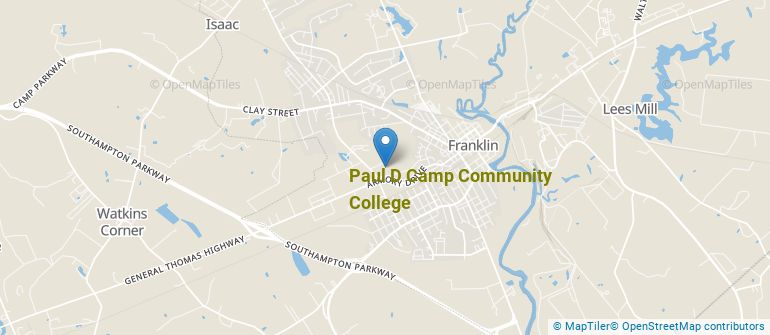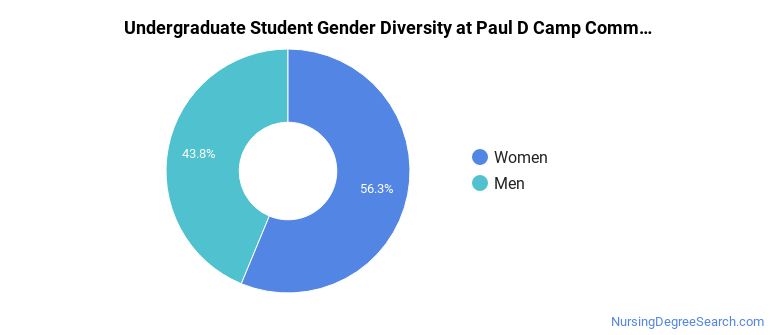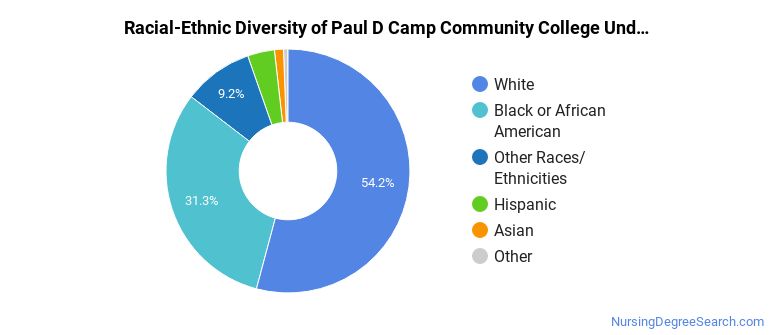Paul D Camp Community College Nursing Programs
Paul D Camp Community College is a public institution located in Franklin, Virginia. The location of Paul D Camp Community College is a good match for students who are interested in living in a college town while they pursue their degree.
Where Is Paul D Camp Community College?

Contact details for Paul D Camp Community College are given below.
| Contact Details | |
|---|---|
| Address: | 100 N College Dr, Franklin, VA 23851 |
| Phone: | 757-569-6700 |
| Website: | www.pdc.edu |
How Do I Get Into Paul D Camp Community College?
You can apply to Paul D Camp Community College online at: www.pdc.edu/attend/signing-up-for-classes/how-to-become-a-student/
Can I Afford Paul D Camp Community College?
Student Loan Debt
It's not uncommon for college students to take out loans to pay for school. In fact, almost 66% of students nationwide depend at least partially on loans. At Paul D Camp Community College, approximately 15% of students took out student loans averaging $3,977 a year. That adds up to $15,908 over four years for those students.
Paul D Camp Community College Undergraduate Student Diversity

Gender Diversity
Of the 336 full-time undergraduates at Paul D Camp Community College, 44% are male and 56% are female.

Racial-Ethnic Diversity
The racial-ethnic breakdown of Paul D Camp Community College students is as follows.

| Race/Ethnicity | Number of Grads |
|---|---|
| Asian | 4 |
| Black or African American | 105 |
| Hispanic or Latino | 12 |
| White | 182 |
| International Students | 2 |
| Other Races/Ethnicities | 31 |
Paul D Camp Community College Nursing Concentrations
The table below shows the number of awards for each concentration.
| Major | Basic Certificate | Associate’s | Undergraduate Certificate | TOTAL |
|---|---|---|---|---|
| Registered Nursing | 2 | 27 | 0 | 29 |
| Licensed Practical/Vocational Nurse Training | 0 | 0 | 6 | 6 |
| TOTAL | 2 | 27 | 6 | 35 |
References
*The racial-ethnic minorities count is calculated by taking the total number of students and subtracting white students, international students, and students whose race/ethnicity was unknown. This number is then divided by the total number of students at the school to obtain the racial-ethnic minorities percentage.
More about our data sources and methodologies.
